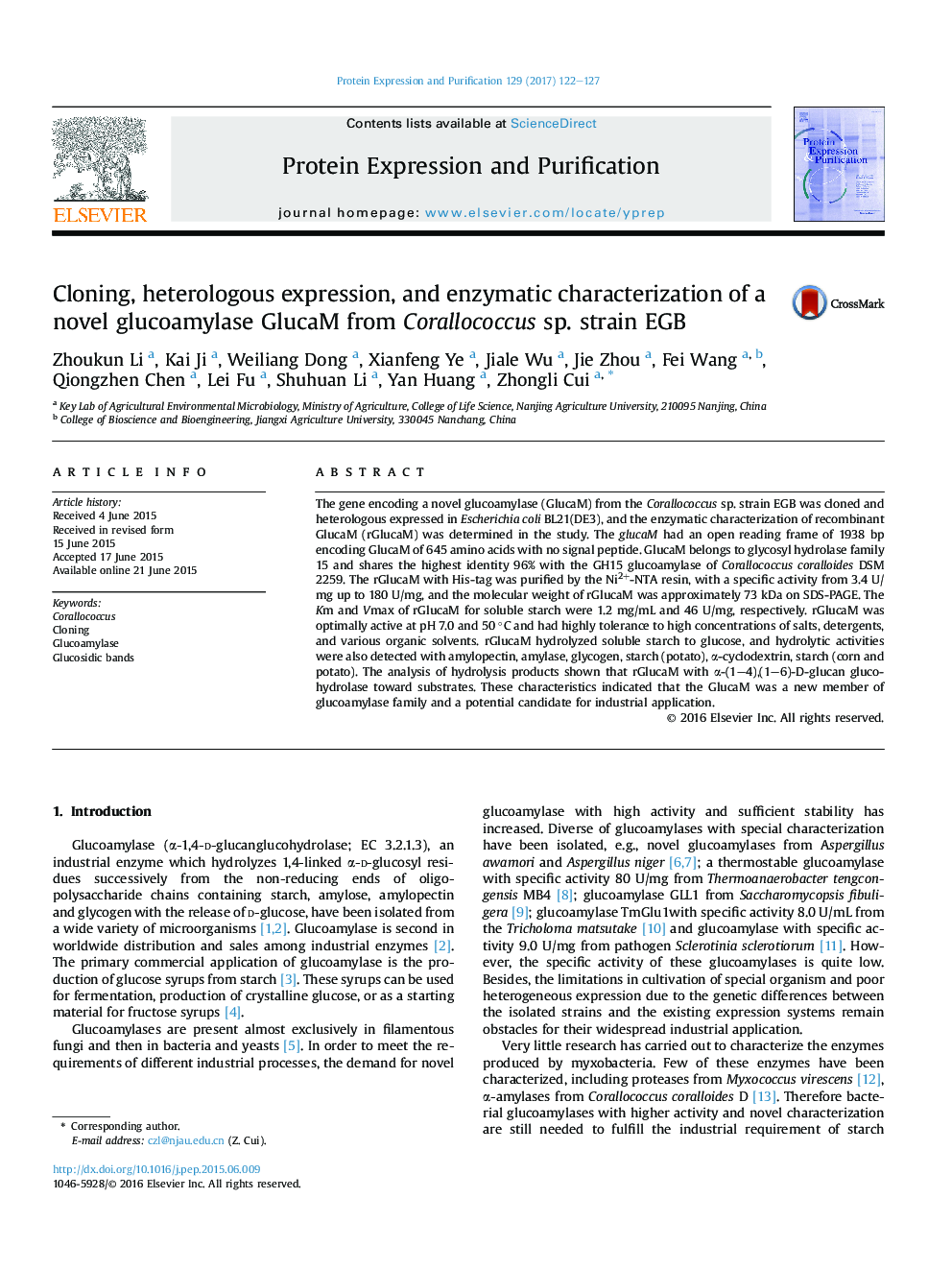| Article ID | Journal | Published Year | Pages | File Type |
|---|---|---|---|---|
| 5516174 | Protein Expression and Purification | 2017 | 6 Pages |
â¢GlucaM shared no significant similarity with these glucoamylases (<10% identity), indicating that GlucaM may be a novel glucoamylase.â¢The activity of GlucaM was independent of Ca2+.â¢GlucaM is also highly resistant to high salt concentrations and various detergents.â¢rGlucaM could act on different substrates and maltooligosaccharides, making it a good catalyst for production of glucose
The gene encoding a novel glucoamylase (GlucaM) from the Corallococcus sp. strain EGB was cloned and heterologous expressed in Escherichia coli BL21(DE3), and the enzymatic characterization of recombinant GlucaM (rGlucaM) was determined in the study. The glucaM had an open reading frame of 1938 bp encoding GlucaM of 645 amino acids with no signal peptide. GlucaM belongs to glycosyl hydrolase family 15 and shares the highest identity 96% with the GH15 glucoamylase of Corallococcus coralloides DSM 2259. The rGlucaM with His-tag was purified by the Ni2+-NTA resin, with a specific activity from 3.4 U/mg up to 180 U/mg, and the molecular weight of rGlucaM was approximately 73 kDa on SDS-PAGE. The Km and Vmax of rGlucaM for soluble starch were 1.2 mg/mL and 46 U/mg, respectively. rGlucaM was optimally active at pH 7.0 and 50 °C and had highly tolerance to high concentrations of salts, detergents, and various organic solvents. rGlucaM hydrolyzed soluble starch to glucose, and hydrolytic activities were also detected with amylopectin, amylase, glycogen, starch (potato), α-cyclodextrin, starch (corn and potato). The analysis of hydrolysis products shown that rGlucaM with α-(1-4),(1-6)-D-glucan glucohydrolase toward substrates. These characteristics indicated that the GlucaM was a new member of glucoamylase family and a potential candidate for industrial application.
